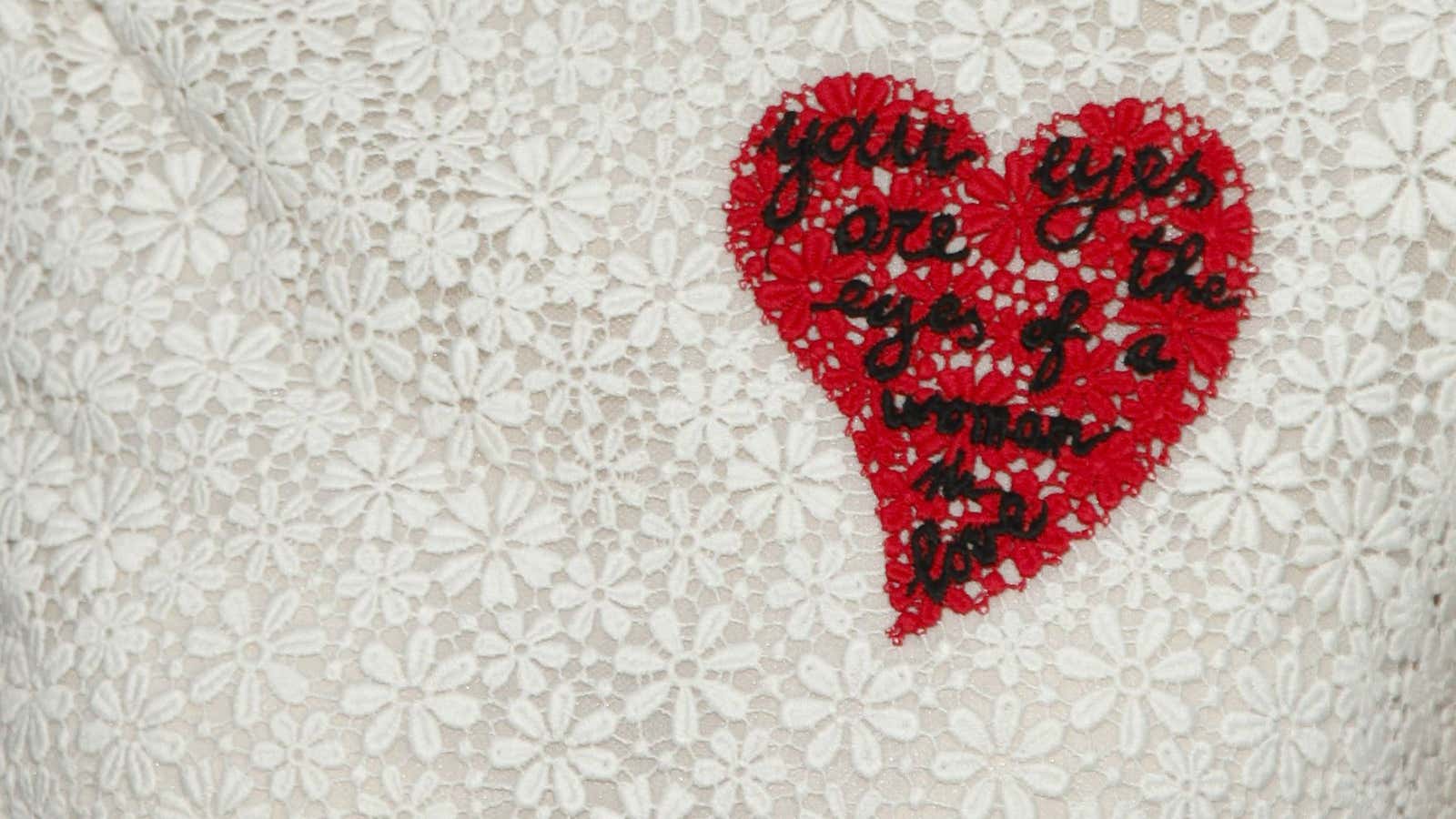Heart disease is not a man’s problem. In 2013, 611,015 Americans (pdf, p. 30) died of heart-related problems, and unlike what you might expect, the gender breakdown was pretty even: 52.5% of the deaths were men, 47.5% women.
For women in the US it’s the leading cause of death and kills almost one in three women every year—more than all types of cancer combined. By comparison, in the US, breast cancer kills one in 31 women. Traditionally, heart attack has been seen as a male disease, women are not aware of their risk. A survey conducted by market research institute GfK found that only 27% of women can mention a woman they know who suffered of heart disease, and only 11% say they know a woman who has died from it.
While men’s heart conditions receive significant funding, research on women’s heart disease is rather underfunded. The National Health Institute (NIH) spent $246 million in funding toward research on women’s heart disease, while $1.5 billion was given for overall heart disease research, which, according to the Women’s Health Alliance, benefits men much more than women.
“The female heart is different,” Dr. Holly Andersen, a cardiologist at the New York Presbyterian Hospital, told Quartz. “It’s smaller, with smaller vessels, and beats faster.”
Women, for instance, are far more likely to die from Takotsubo cardiomyopaty, known as broken heart syndrome, a reversible heart condition following high stress or emotional pain, which can result in death. The condition is so rare in men that, reports Andersen, “there are cardiologist who don’t believe it exists.”
As a consequence of the male focus, at least in the US, “the criteria upon which we decide if someone is having a heart attack are based on men,” Andersen told Quartz, noting that the majority of people in the US are women, and ”it’s not fair that we pay for studies done on a smaller part of population.”
“How about this one,” had noted Barbra Streisand, an advocate for the cause, during a panel on heart risk in women at the Women in the World conference, ”the mice that they do research on are male mice! How can you do research for women on men mice?” Indeed, confirmed Andersen, lab trials and testing of drugs (cardiovascular and otherwise) is done predominantly on male mice (or on male subjects). (According to Andersen, only 26% cardiovascular disease research subjects are women.)
The lack of knowledge about heart disease in women can be fatal: Often female patients fail to recognize the signs of heart attacks, as they differ from men’s symptoms, which results in delayed care and a higher mortality rate.
While chest pain is the most common symptom in men and women, it only occurs in about half the cases of female heart attacks. Other symptoms that are common in women are are back or neck pain, indigestion, heartburn, nausea, vomiting, extreme fatigue, or trouble breathing. Men are more likely to report pain in the left arm and break out into cold sweats.
Heart attacks in women are frequently misdiagnosed because physicians fail to recognize the symptoms or because the complaints weren’t taken seriously, mistaken instead for anxiety.
Andersen says it’s likely that women feel embarrassed to afflicted by an “old man’s disease.” Women also have the misconception that they’ve done something wrong to bring disease upon themselves. Further, the idea that heart issues may be an indicator of aging makes women less likely to share their experiences.
